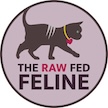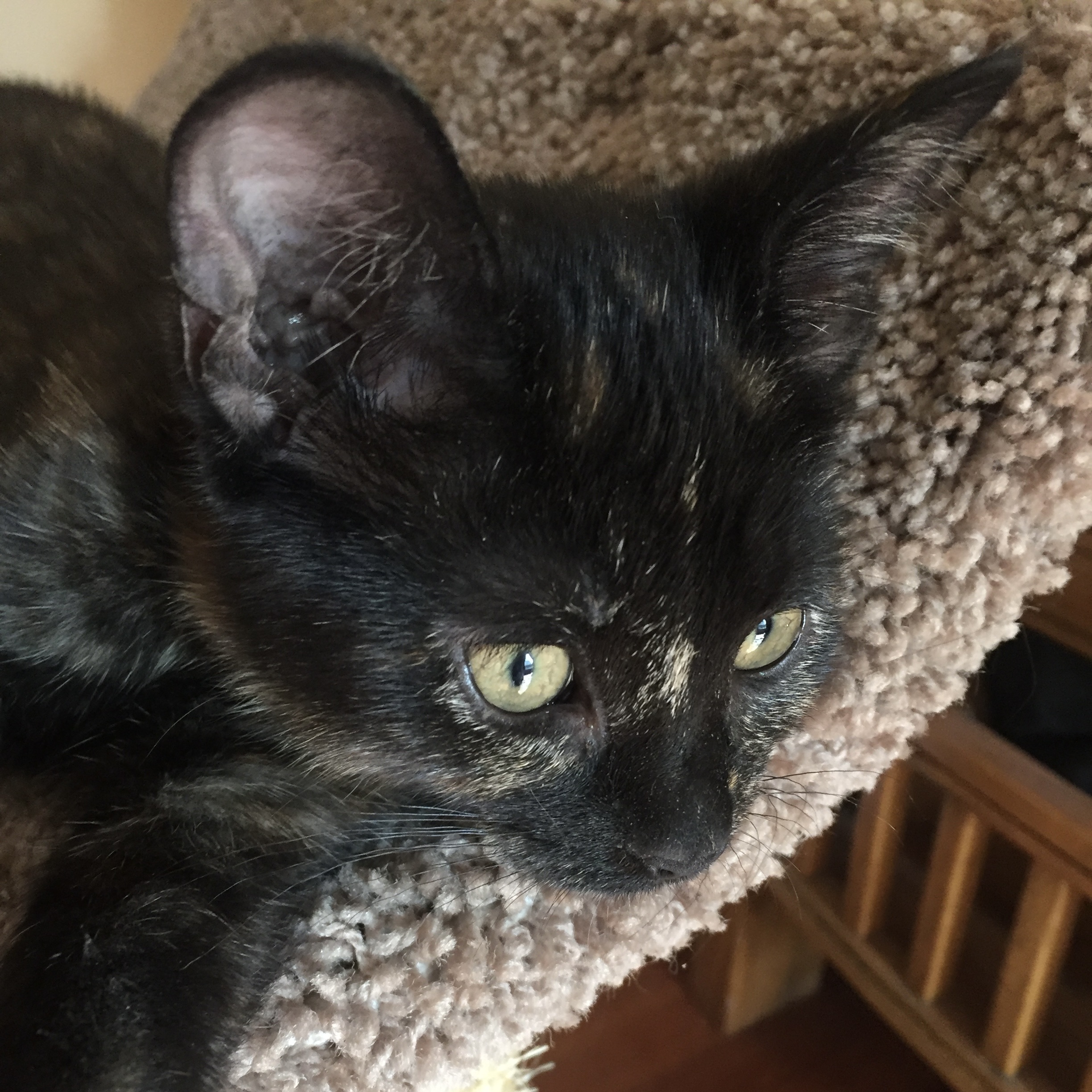Kittens are basically stomachs with paws when it comes to eating! They are growing rapidly and need species appropriate nutrition to support their development. However, there is often a lot of trepidation about feeding kittens raw. There are a few minor differences in the NRC recommendations for kittens in contrast to adult cats, most notably calcium and phosphorus. But it is easy to provide the necessary calcium and phosphorus when feeding a bone based raw diet. And let’s keep in mind that there are no special kitten-formulated rodents available in the wild or cooked birds to eat before they reach adulthood.
Kittens need the same moisture and protein rich, low carb diet as adult cats do. But they definitely eat more of it relative to their body weight. I started feeding Hazel raw as soon as I brought her home at 10 weeks of age.
Feeding raw
Once kittens are ready to eat solid foods, typically around 4-6 weeks of age, you can wean them straight to a raw diet. After all, this is what kittens are designed to naturally eat. A raw diet is a great way to provide a strong nutritional foundation for your kitten. You have several options to feed a raw diet, which I discuss in detail here.
commerical raw options
One option is to feed a freeze dried or frozen commercial pre-made food that is made with bone. These commercial foods will indicate if they meet nutritional recommendations for All Life Stages. VivaRaw is a good example of a frozen pre-made raw food that uses bone and is suitable for All Life Stages, which includes kittens.
Another option is to use a meat completer to make your kitten’s food. There are several options that are appropriate for kittens. Check out this previous post for more details on the available completers.
Homemade raw
When feeding a prey model raw diet to kittens, it is important to use bone, rather than eggshell to meet their needs for calcium, magnesium, and phosphorus. While eggshell works well to provide calcium in the diet, it does not provide phosphorus like bone does. If whole or fresh ground bones are not available, then MCHA, which is freeze dried bone, is an appropriate substitute when making food for kittens.
Kittens can be fed at the same prey model raw ratios of meat, bone, and organs, with bone fed in the range of 6-10%. Size appropriate bones include chicken wingtips, wingettes split lengthwise, quail, rabbit and chicken ribs, small pieces of chicken neck, and chicken and duck toes. It can be helpful at first to smash the bone before feeding to your kitten while they build up their jaw strength.
Please note that when kittens are teething, around 5-6 months of age, their gums may be too sore to crunch bone. You can offer ground bone during the teething stage and feed whole bone when teething is over.
You also want to be sure to include a source of omega 3 fatty acids in the diet to support kittens’ brain development.
importance of variety
As kittens are typically open to new tastes and textures, offering variety at this impressionable stage of development is helpful to prevent a picky adult cat in the future. You want to introduce any new foods slowly, but it is a very good idea to work on developing variety in the diet. Different proteins, textures, brands, etc. are all great ways to provide a varied and balanced diet.

How much to feed kittens
Typically, kittens should not have the amount they eat restricted. Cats and kittens are generally very good at regulating their intake and eating what they need. Kittens should be offered small meals throughout the day and be allowed to eat their fill at each meal. There are automatic feeders with ice packs that can be used to provide meals when you are not home.
The amount they eat will fluctuate with growth spurts. Younger kittens are typically offered 5-8 meals per day. Around 9-10 months of age, their eating naturally slows and they can be offered 3-4 meals per day. At 12 months of age, most cats are eating in an adult pattern of 3 meals per day.
Here is a rough guide for how much to feed your kitten:
2-4 months old: 10-13% of their current body weight per day
4-8 months old: 6-10% of their current body weight per day
8-12 months old: 3-6% of their current body weight per day
Being able to monitor your kitten’s weight is important to ensure your kitten is growing properly and steadily gaining weight. Keeping track of your kitten’s weight also allows you to catch any health concerns as soon as possible. You can use a baby scale at home with your kitten to do this. If your kitten is losing or not appropriately gaining weight, a trip to the vet is necessary. Kittens can go downhill fast and quick intervention is key.

enjoy your kitten
Enjoy your kitten and set them up for a lifetime of health and well being—starting with the foundation of proper nutrition for the little carnivore they are!


